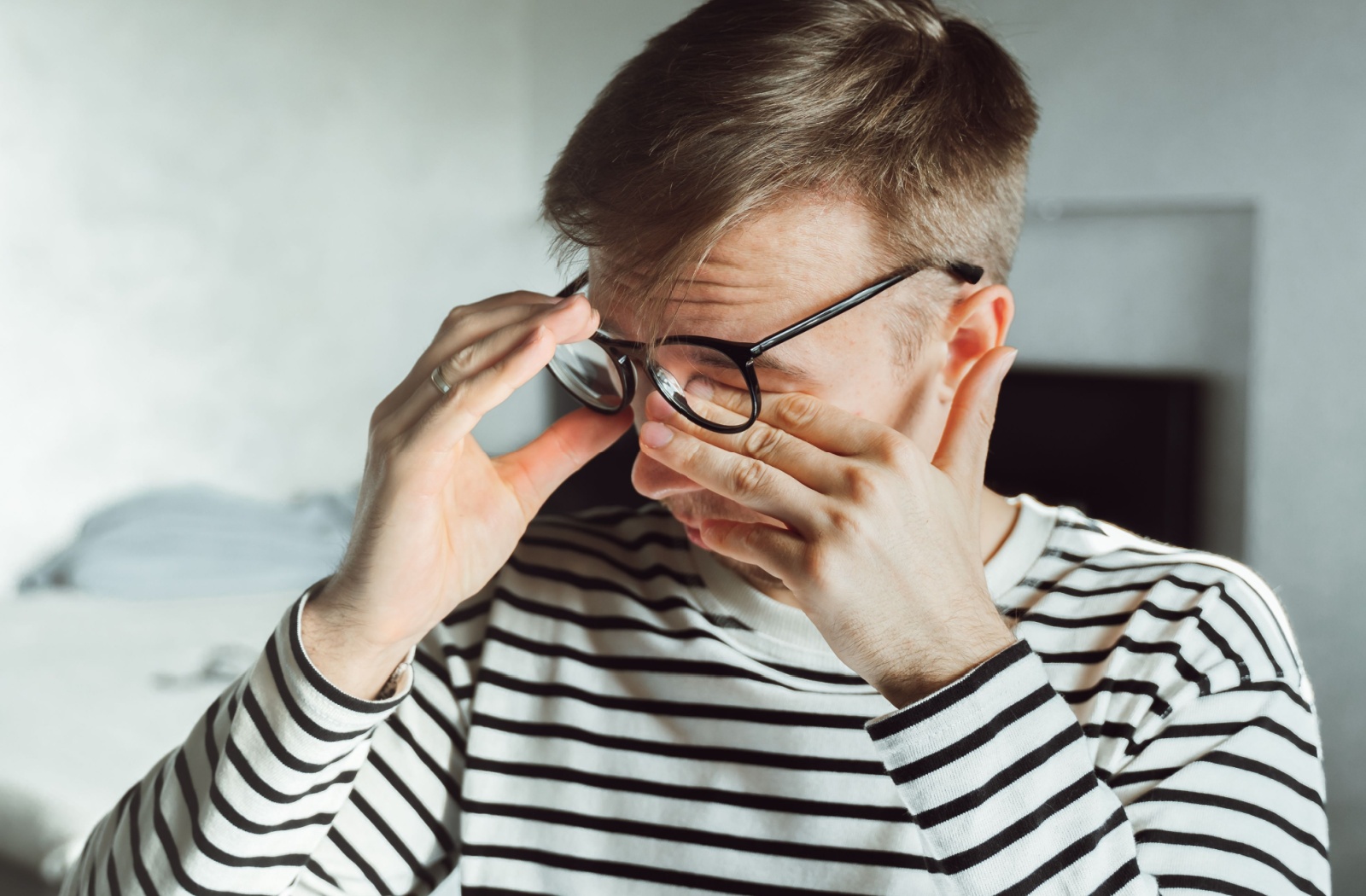Dry eyes can cause blurriness, but rarely cause permanent vision changes. When your eyes lack proper moisture, the tear film becomes unstable, leading to fluctuating vision. This blurriness often worsens as the day progresses or with extended use of digital screens.
The good news is that dry eyes are treatable, and addressing the root cause can help restore your vision to clarity. Let’s explore what dry eye is, its symptoms, risk factors, and how to treat it effectively.
What is Dry Eye?
Dry eye occurs when your eyes don’t produce enough tears or the tears produced are of poor quality, leading to inadequate lubrication. Tears are essential for maintaining clear vision and overall eye comfort. Without sufficient moisture, the eye’s surface irritates, leading to burning, itching, and blurry vision.
Left untreated, dry eye can affect your quality of life, making it difficult to perform daily tasks like reading or using the computer. Fortunately, effective treatments can help relieve discomfort and restore eye health.
Common Signs & Symptoms of Dry Eye
Dryness in the eyes is something that everyone experiences. However, dry eye is characterized by consistent, ongoing symptoms and dryness that impact vision and comfort. Common signs of dry eye include:
- Blurry vision: Often comes and goes, especially after prolonged screen time.
- Burning sensation: A stinging or gritty feeling in the eyes.
- Redness: Inflamed or bloodshot eyes due to irritation.
- Sensitivity to light: Discomfort or pain when exposed to bright lights.
- Frequent tearing: Excessive watering as a reflex response to dryness.
- Feeling of something in your eye: A persistent feeling of a foreign object or debris.
- Eye fatigue: Tired eyes, especially after reading or working on the computer.
Am I at Risk for Dry Eyes?
Anyone can develop dry eyes, but certain factors can increase your risk. Age is one of the most common contributors, as tear production tends to decrease as we age. Hormonal changes, particularly in women during pregnancy or menopause, can also play a role. Additionally, those with autoimmune conditions like rheumatoid arthritis or Sjögren’s syndrome may experience chronic dry eye symptoms.
Understanding these risk factors can empower you to proactively protect your eye health, reducing the chances of developing dry eyes. Environmental factors such as spending long hours in air-conditioned or heated environments, staring at digital screens for extended periods, or living in a windy, dry climate can all contribute to dry eyes. By being aware of these factors, you can take steps to mitigate their effects and maintain healthy eyes.
Treating Dry Eye

If you’re experiencing dry eye symptoms, rest assured that effective treatment options are available to help manage the condition and improve your vision.
The best course of action depends on the severity of your symptoms and the underlying cause. In mild cases, lifestyle changes may be enough to provide relief, while more advanced cases may require medical intervention. You can regain comfort and clarity in your vision with the right treatment.
- Artificial Tears: Over-the-counter lubricating eye drops can help replenish moisture on the surface of your eyes. These drops mimic natural tears and can be used as needed to relieve dryness.
- Prescription Medications: For more severe dry eye, prescription medications like Restasis or Xiidra can help increase tear production and reduce inflammation. These medications target the root cause of dry eye by encouraging your body to produce more natural tears.
- Punctal Plugs: In some cases, your eye care professional may recommend punctal occlusion. This procedure involves inserting small plugs into your tear ducts to prevent tears from draining too quickly. This helps keep the surface of your eye moist for a longer period.
- Eyelid hygiene: Proper eyelid hygiene is essential for managing dry eye, especially if meibomian gland dysfunction (MGD) is involved. Warm compresses or specialized eyelid cleansers can help unclog oil glands, improving the tear film quality.
- Intense Pulsed Light (IPL) therapy: IPL is a newer treatment option that uses light pulses to reduce inflammation and restore normal function to the meibomian glands. This therapy can be beneficial for those with MGD-related dry eye.
- Environmental adjustments: Making small changes in your environment can also help manage dry eye symptoms. For example, using a humidifier, taking regular breaks from screen time, and wearing sunglasses to protect your eyes from wind and UV rays can all make a difference.
By working with your eye care provider, you can develop a personalized treatment plan that addresses your specific needs. Early intervention prevents further complications and maintains healthy, comfortable eyes.
Discover Clear, Comfortable Vision
You deserve clear, comfortable vision throughout your life. Don’t let dry eyes interfere with your daily routines or adventures. At Vision Care Centre, we specialize in diagnosing and treating dry eye to help you see clearly and feel comfortable.
Contact us today to schedule an appointment and explore the best treatment options for your eye health.



